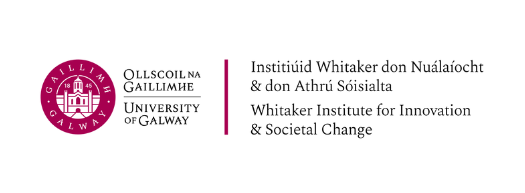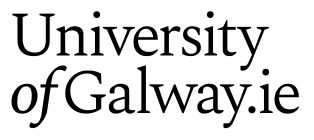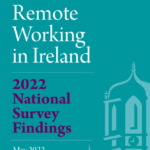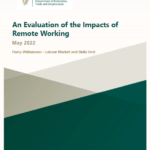News
2022 National Remote Working Survey
Third annual National Remote Working Survey shows 95% believe working remotely makes life easier Survey shows that 30% of respondents will change jobs – even if it means a pay cut – if their remote working preferences are not facilitated Researchers from the Whitaker Institute at NUI Galway and the Western Development Commission have revealed… | Read on »
Cois Coiribe – From the Ground Up – Irish peatlands communities reducing CO2 emissions
Whitaker Institute member Professor Christine Domegan, leader of the Applied Systems Thinking Cluster, has written a new piece for Cois Coiribe. The article looks at research being undertaken on peatlands communities as part of the Peatlands and People project, for which Professor Domegan leads Pillar 3. To read the article, click here. To read more… | Read on »
RTÉ Brainstorm – What 2022’s Leaving Cert class have to say about life since 2020
Whitaker Institute member Dr Eamonn Furey, of the Social Sciences Research Cluster, has co-authored a new piece for RTÉ Brainstorm. The article looks at the pandemic experiences of Irish youths. What 2022’s Leaving Cert class have to say about life since 2020 Analysis: research into the pandemic experiences of Irish youths has identified key themes… | Read on »
Labour immigration and demographic transformation: Lithuanian and Polish nationals in rural Ireland
International migration in search of employment is long-established, as Ireland’s emigration record illustrates. Immigrants usually move initially to large cities where employment opportunities are greatest. Recruitment to specific types of rural employment is also well-established internationally. Additional research on the spatial distribution of immigrant labour at a national scale is recommended to gain a better… | Read on »
Agriland.ie – Dr. Farrell: Women are ‘untapped potentials in rural development’
Whitaker Institute member Dr Maura Farrell says that women in rural economies, in agriculture or in small to medium-sized enterprises (SMEs) are probably one of the most untapped potentials in rural development. Dr Farrell was speaking at the recent ‘Rural Ireland: Our Long-term Vision’ at the Irish Rural Link 30th anniversary conference. More from Agriland.ie.
Agriland.ie – Study: Succession similarities between Irish and US farmers
A new study, led by Whitaker Institute member Dr Shane Conway, of the Environment, Development and Sustainability cluster, has found striking similarities between farmers in Ireland and the United States (US) when it comes to retirement and succession. Read more from Agriland.ie.
IGEES – An Evaluation of the Impacts of Remote Working
The Irish Government Economic & Evaluation Service has recently published a report evaluating the impacts of remote working. The report found remote working is likely to improve labour market outcomes, greater flexibility in terms of time management, childcare & commuting options, amongst other things. The report used findings from the Whitaker Institute and the Western Development Commission’s National Remote… | Read on »
Deutsche Welle TV – Northern Ireland Assembly elections
Whitaker Institute member Professor Niall Ó Dochartaigh, co-leader of the Conflict, Humanitarianism and Security cluster, spoke to Deutsche Welle TV about the Northern Ireland Assembly elections. Watch here.
RTÉ Radio 1’s Morning Ireland – Governor of Central Bank says Ireland’s level of inflation is concerning
Whitaker Institute member Professor John McHale, of the Macroeconomics and Finance cluster, spoke to RTÉ 1’s Morning Ireland about the rate of inflation and why its likely to increase in the months ahead. Listen back here.
Cois Coiribe – How Domestic Violence Fuels Wider Conflict
Whitaker Institute member Dr Nata Duvvury, of the Gender and Public Policy Cluster, has written a new piece for Cois Coiribe, which looks at the strong links between domestic violence and manifestations of public violence. The article is available to read here.










